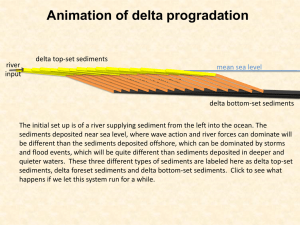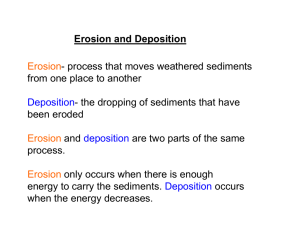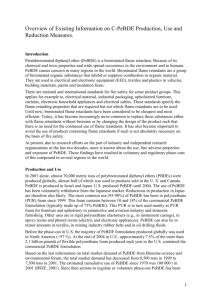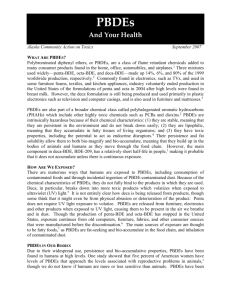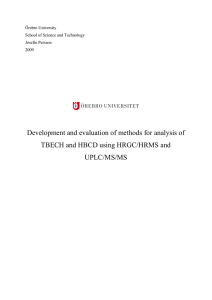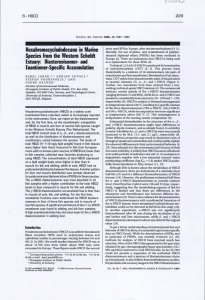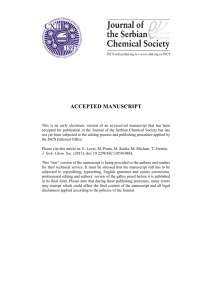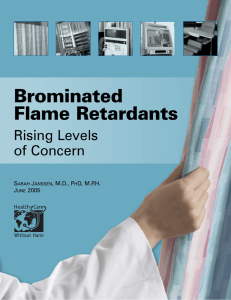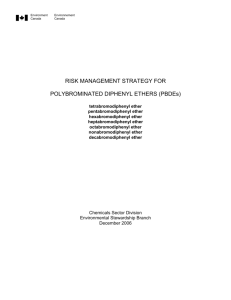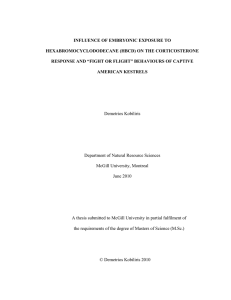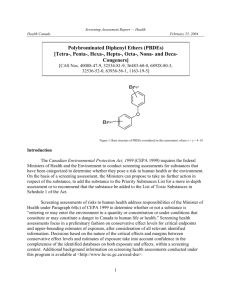PBDE, HBCD, and novel brominated flame retardant - IRSA
advertisement
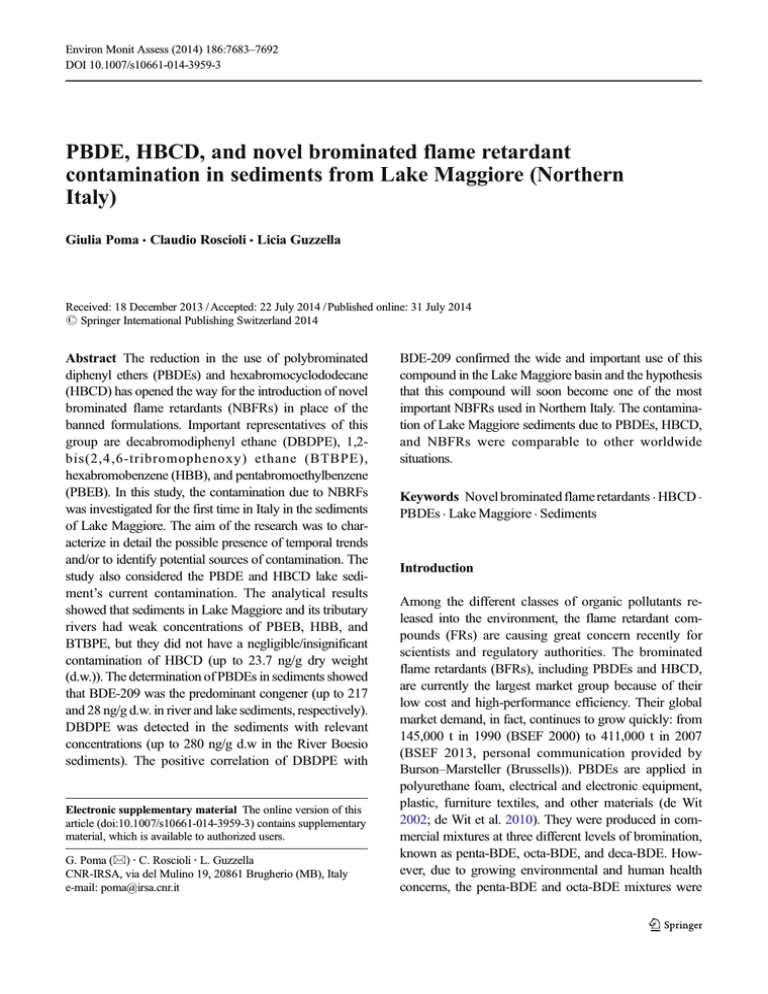
Environ Monit Assess (2014) 186:7683–7692 DOI 10.1007/s10661-014-3959-3 PBDE, HBCD, and novel brominated flame retardant contamination in sediments from Lake Maggiore (Northern Italy) Giulia Poma & Claudio Roscioli & Licia Guzzella Received: 18 December 2013 / Accepted: 22 July 2014 / Published online: 31 July 2014 # Springer International Publishing Switzerland 2014 Abstract The reduction in the use of polybrominated diphenyl ethers (PBDEs) and hexabromocyclododecane (HBCD) has opened the way for the introduction of novel brominated flame retardants (NBFRs) in place of the banned formulations. Important representatives of this group are decabromodiphenyl ethane (DBDPE), 1,2bis(2,4,6-tribromophenoxy) ethane (BTBPE), hexabromobenzene (HBB), and pentabromoethylbenzene (PBEB). In this study, the contamination due to NBRFs was investigated for the first time in Italy in the sediments of Lake Maggiore. The aim of the research was to characterize in detail the possible presence of temporal trends and/or to identify potential sources of contamination. The study also considered the PBDE and HBCD lake sediment’s current contamination. The analytical results showed that sediments in Lake Maggiore and its tributary rivers had weak concentrations of PBEB, HBB, and BTBPE, but they did not have a negligible/insignificant contamination of HBCD (up to 23.7 ng/g dry weight (d.w.)). The determination of PBDEs in sediments showed that BDE-209 was the predominant congener (up to 217 and 28 ng/g d.w. in river and lake sediments, respectively). DBDPE was detected in the sediments with relevant concentrations (up to 280 ng/g d.w in the River Boesio sediments). The positive correlation of DBDPE with Electronic supplementary material The online version of this article (doi:10.1007/s10661-014-3959-3) contains supplementary material, which is available to authorized users. G. Poma (*) : C. Roscioli : L. Guzzella CNR-IRSA, via del Mulino 19, 20861 Brugherio (MB), Italy e-mail: poma@irsa.cnr.it BDE-209 confirmed the wide and important use of this compound in the Lake Maggiore basin and the hypothesis that this compound will soon become one of the most important NBFRs used in Northern Italy. The contamination of Lake Maggiore sediments due to PBDEs, HBCD, and NBFRs were comparable to other worldwide situations. Keywords Novel brominated flame retardants . HBCD . PBDEs . Lake Maggiore . Sediments Introduction Among the different classes of organic pollutants released into the environment, the flame retardant compounds (FRs) are causing great concern recently for scientists and regulatory authorities. The brominated flame retardants (BFRs), including PBDEs and HBCD, are currently the largest market group because of their low cost and high-performance efficiency. Their global market demand, in fact, continues to grow quickly: from 145,000 t in 1990 (BSEF 2000) to 411,000 t in 2007 (BSEF 2013, personal communication provided by Burson–Marsteller (Brussells)). PBDEs are applied in polyurethane foam, electrical and electronic equipment, plastic, furniture textiles, and other materials (de Wit 2002; de Wit et al. 2010). They were produced in commercial mixtures at three different levels of bromination, known as penta-BDE, octa-BDE, and deca-BDE. However, due to growing environmental and human health concerns, the penta-BDE and octa-BDE mixtures were


